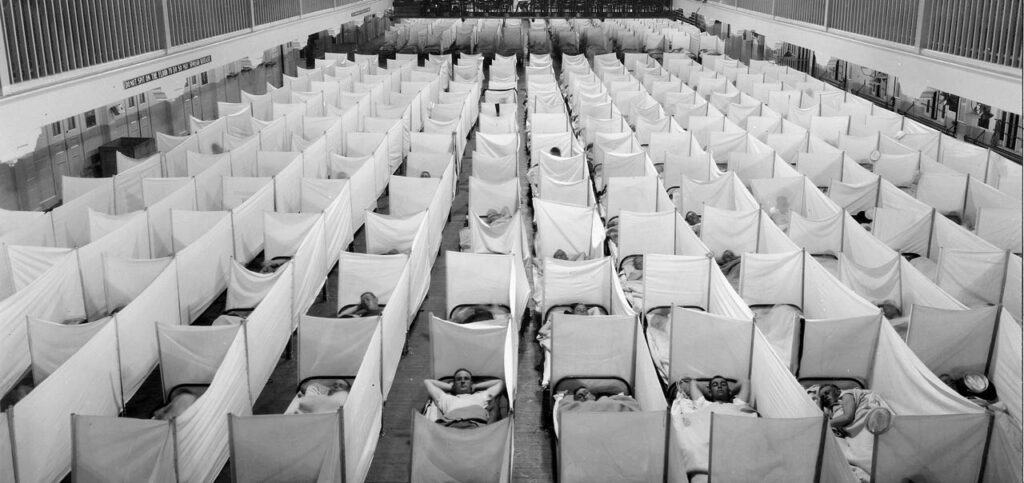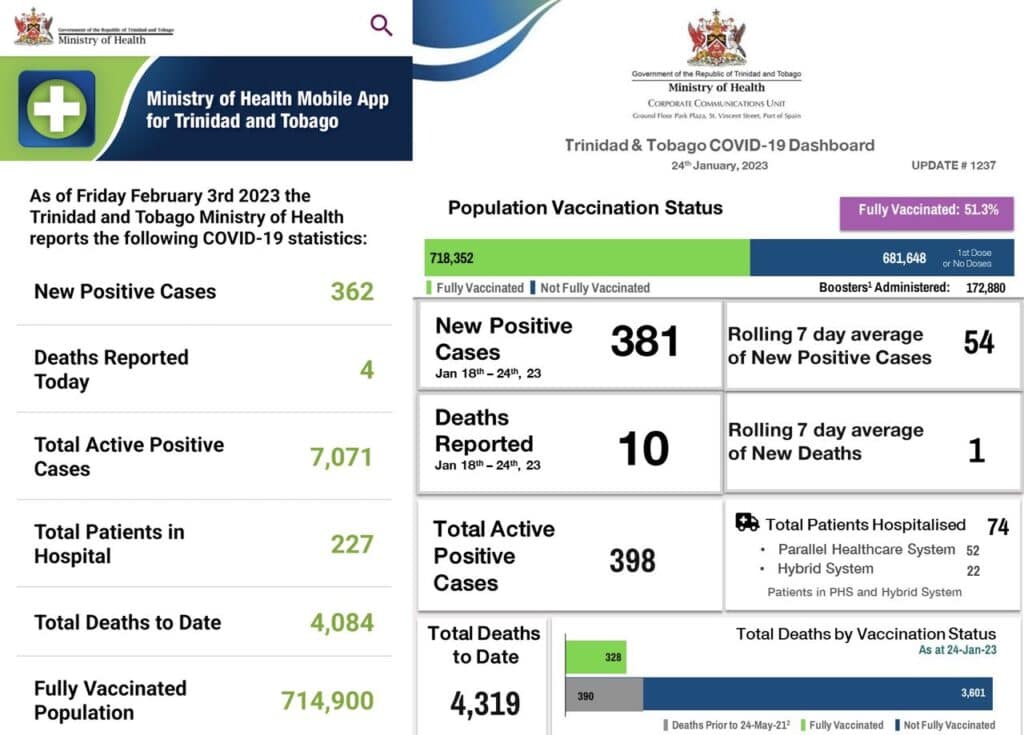
Above: A Naval Aircraft Factory float, featuring the hull of a F5L patrol seaplane, going south on Broad Street, escorted by sailors with rifles. Photo: US Naval History and Heritage Command,
BitDepth#1392 for February 06, 2023
In early 1918, a strain of influenza migrated from the animal population in the American mid-west to the human population.
The first case was identified in Kansas in March, 1918.
The impact was initially small, but the virus had a unique opportunity to thrive when American soldiers, called doughboys. joined the War in Europe.
These young men, many of them little more than children, were the kind of healthy carriers that gave the influenza virus an opportunity to travel and find new hosts.
By April, the virus had reached the Western Front and began ravaging both sides of the muddy battle. Both sides of the “Great War” chose to downplay the presence of influenza on the battlefield, but the virus cared little for politics.
Nobody called it influenza. Americans suffered the purple death, French troops succumbed to purulent bronchitis, Italian soldiers were stricken by sand fly fever and German hospitals were soon filled with cases of Blitzkatarrah, or Flanders Fever.
This unwillingness to acknowledge the impact of the virus continued in the reporting on the conflict. Numbers were aggressively suppressed, and it was only neutral Spain that reported on the spread of influenza in Europe.

As a reward for its forthright disclosure of the situation within its borders, the illness was, for an unnecessarily long time, described as “Spanish Flu.”
The media blackout meant that hundreds of soldiers returning from the war landed at ports that had no inkling of what had been going on in Europe.
Cases started cropping up in these port cities and by early September 1918, the Philadelphia Naval Yard had 600 confirmed cases.
Philadelphia, a city, with a population of 1.7 million, was busy planning a Liberty Loan Parade, an event planned to raise $259 million to support the expensive war that the US had joined.
Officials weren’t worried. They expected around 10,000 people to show up on the streets to view the parade.
Considering cancellation meant risking being branded as being unpatriotic in the middle of a war effort.
On September 28, 1918, 200,000 patriotic Americans gathered along a two-mile stretch of Broad Street to view floats, horse-drawn heavy artillery and marching bands, led by John Phillip Sousa.
It was, by all reports, quite a grand occasion.
Within 24 hours, 118 people presented with influenza symptoms. Three days later, every bed in Philadelphia’s hospitals was filled. Within a week, 4,500 were dead. Eventually, the death count in Philadelphia would rise to 17,000 with 250,000 infected.
St Louis cancelled its Liberty Loan Parade, and influenza killed less than 700 there. Between 1918 and 1922, between 50 and 100 million people were killed worldwide by this strain of influenza. Then it disappeared before it could be isolated.
It’s tempting to think that the worst of the coronavirus is behind us.
There are already dozens of variants than have been deescalated as they disappear or prove unthreatening.
But Omicron subvariants continue to evolve.
The current variant on the disease prevention radar is XBB.1.5, nicknamed Kraken, a fifth generation grandchild of the XBB subvariant that surged in Singapore in October.
Kraken, listed as a Variant of Interest, is a mosaic variant, the love child of two subvariants, BA.2.10.1 and BA.2.7.5.
Spreading explosively in December, Kraken, more transmissible and immunity evasive, is on track to become the most dominant variant globally.

Covid19 is now mutating so rapidly that it has outpaced the vaccines that were formulated for the earliest strain and the first variants.
Vaccination is likely to provide some advantage in preventing more severe illness, but older doses aren’t the prophylactic that they were a year or two ago.
The newer bivalent vaccines target variants that are no longer dominant, though they appear to be more effective against hospitalisation-level infection than earlier vaccines. The Moderna bivalent vaccine has demonstrated efficacy ranging between 49 and 37 per cent as the age of recipients increases.
As with the less deadly variants that have cropped up as the coronavirus mutates, the impact of new strains like Kraken will depend on individuals and their vulnerabilities and the immuno-compromised remain at risk.
Anyone elderly with comorbidities should continue taking precautions, including social distancing and mask wearing, neither of which is likely to be a popular choice over the next two weeks.
Carnival is a juggernaut once it is set in motion, and the Mother of Carnivals is likely to be unstoppable.
While all this momentum is building, the reporting of cases by the Ministry of Health has become even more spotty. The last @MOH_TT dashboard on Twitter was posted on January 24.
Updated stats are available on the Ministry’s app, but offer no history or context and nothing else is being updated there.
It’s as if nobody is concerned. And a big parade is coming.


